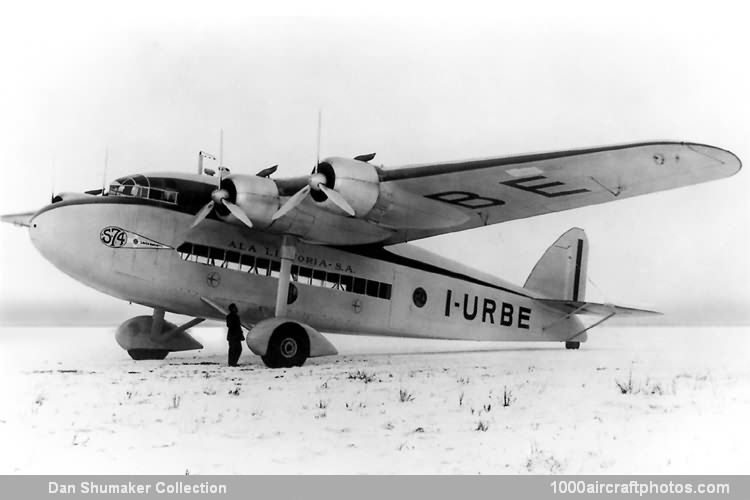Then during the years 1934 and 1935 the company built three S.74s. These were similar to the S.71s but much bigger and powered by four engines, 700 hp Piaggio Stella X.RCs in the first two aircraft and 845 hp Alfa Romeo Pegasus IIIs in the last one. The engines were enclosed in NACA cowlings and drove three-blade two-position controllable-pitch metal propellers. In 1938 800 hp Alfa Romeo 126 engines were fitted.
Like the S.71s, the S.74s had thick one-piece three-spar wooden wings covered with plywood with a final covering of fabric; welded steel-tube fuselage with ply and fabric covering; and metal-framed tail unit with fabric covering. The wing was fitted with split flaps. The main landing gear units were attached to the inboard engine mountings, and the wheels were fitted with brakes and partially enclosed in streamlined spats.
The crew cabin was high in the nose just forward of the wing and the main cabin, with full-length windows, had eight single seats on the left side and sixteen on the right. There was a bar and lavatory aft and the baggage was carried in underfloor holds.
The prototype S.74 flew for the first time on November 16, 1934. All three aircraft were registered to Ala Littoria in 1935 as I-URBE, I-ALPE (c/n 21002) and I-ROMA (c/n 21003) on March 26, May 31 and December 13 respectively. They were employed on the Rome to Paris route. This involved crossing the Alps and passengers were supplied with oxygen via leads hanging from the overhead baggage racks, the same system being used after WW II on the Savoia-Marchetti S.M.95 four-engined low-wing monoplanes used by Alitalia.
During the war the S.74s were used as military transports by the Regia Aeronautica, serving first with 616, and then later with 604 squadron. The last of the S.74s was damaged in a bombing raid on Rome's old Urbe Airport on July 19, 1943."
